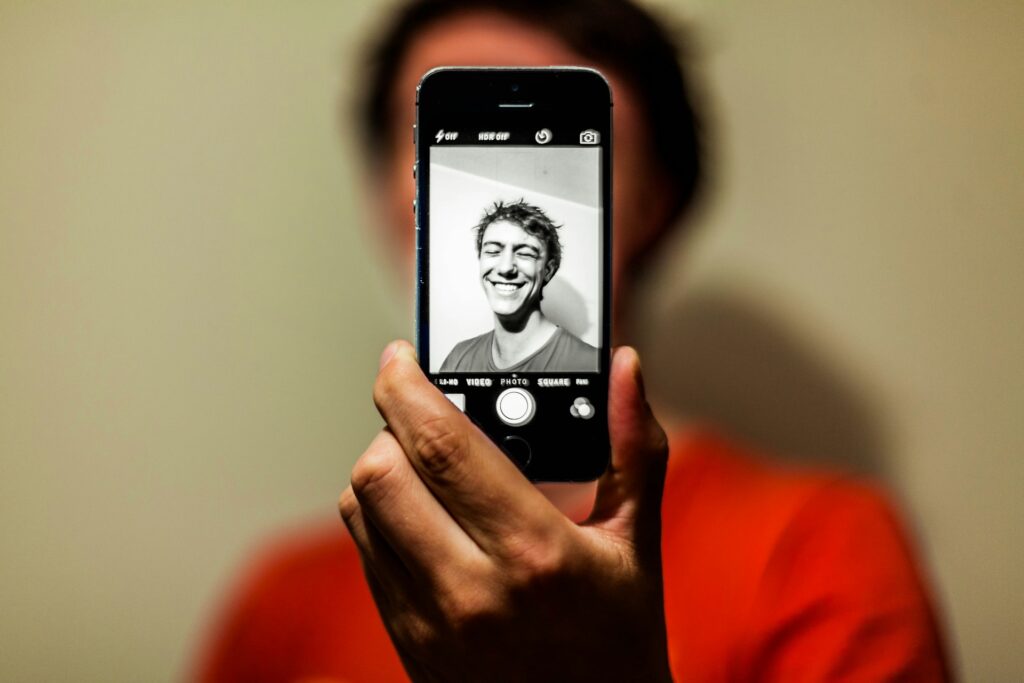CLIQUEZ ICI POUR LIRE LA VERSION FRANÇAISE
As teachers know only too well, school is generally the place where teenagers become aware of their own voice, often with the flash of self-perception the first time they find themselves giving an oral presentation to the whole class. Surely you remember how that felt? Suddenly, all eyes and ears were on you. Finally a chance to raise your voice and say all those things you have inside? Or a moment when you were so overwhelmed by your own singularity that your voice faltered, tripping over itself?
For some teenagers, speaking in public is natural; for others, it is a huge challenge. At a time of life when self-image and the need to be accepted by others are central preoccupations, a student at odds with oral expression who throws out “… anyway, I can’t stand the sound of my own voice,” also throws out a teaching challenge. Although that individual may be the only person to actually put it into words, there are certainly others in the same class who feel the same about their voice, and helping people face up to these feelings is the subject of this article which continues the series Words tripping off the tongue.
Accepting your voice means accepting a selfie
How can the concept of a selfie help us here? According to estimates relayed by the website Photography Revision, 93 million selfies are captured daily in 2025. A typical young student may take between one and four selfies every day. But there’s an interesting twist : “People generally take a mere 11 seconds to judge their selfie quality. However, an additional 26 minutes may be spent contemplating its potential social media impact.” The image is one thing, but the need to assess its impact is something else.

Photo – Antoine Beauvillain from Unsplash
Invite teenagers who don’t like the sound of their own voice to think of it as a selfie. We can spend as long as we like wondering who is in a photo we’ve just taken of ourselves and consider its potential social media impact. It doesn’t look right, but it’s definitely us. A post on Color Experts explains : “When you look in a mirror, you see a familiar version of yourself. This daily reflection becomes your most comfortable image. However, it’s not how others see you. Mirrors reverse our image, subtly altering our appearance. We’re used to this reflection. So, photos can be shocking or uncomfortable. Yet, photos show how others truly see us.”1
Once you have a recording, wondering about the sound of your own voice can feel like puzzling over a selfie.
Voice confrontation vs the habituation effect
Science tells us that the voice we hear when we speak every day comes to us partly through our ears, and partly through the resonance in the bones of our face. This bone-conduction makes our speaking voice appear deeper and richer than it really sounds to people listening to us.
The non-recognition and occasional refusal to accept ownership of our own voice is called voice confrontation and generally happens when listening to it in a recording. We are expecting the voice we know – the bone-conducted voice which Rebecca Kleinberger calls our inward voice – but all we get is the the air-conducted voice everybody else knows – our outward voice2. In the same way that the face we see in the mirror is not the one we see when we take a selfie, the voice we know from ordinary speaking can seem absent from a recording. Understanding why it happens is an important step to accepting the way we sound.

Source Freepik
It doesn’t even require a recording for us to experience voice confrontation because, in the very act of speaking in public, something odd can occur. Our voice being something we hear all the time, a habituation effect means we usually pay less attention to it than we should. A neurological filter shuts down in our auditory cortex, says Rebecca Kleinberger, so “your brain hears your voice, but your brain actually never listens to the sound of your voice.”
Speaking in public can disturb this habituation effect : as our voice is the focus of everyone’s attention – maybe more than we want it to be – this can distract us from what we are saying so that neurological filter in our auditory cortex, which was switched off, switches on again. We begin to hear ourselves speak and the unexpected sound of our own voice can be disturbing and disrupt our verbal flow. This is a natural phenomenon but, until we understand that, the disruption it causes can make public speaking a seemingly insurmountable challenge for some people.
Learning to use the voice you have
Oral expression enables us to interact with those around us and to make our ourselves heard. As students who thrive on written tests learn, showing and sharing what you know is not simply a question of being able to write but also of being able to speak. Now it is a more regular mode of assessment, the place of oral expression in the secondary classroom has changed. It is no longer that odd experience in a foreign language lesson where we interact in improbable situations : across the curriculum, students now need to learn how to make themselves heard. This means learning to use that voice they have.
Understanding the notion of vocal confrontation and being aware of how our auditory cortex can switch back on when we speak in certain situations are vital elements towards learning to accept the sound of our own voice. Encouraging students to record and listen back to voice messages on their phones is a further and simpler way of getting them to recognise as their own the strange outward voice which the machine captures and plays back to them.
Creating moments in class where oral productions are recorded can also help. Teachers who are interested in a collective class activity which focuses on voice acceptance are invited to read the sister article to this one called Teenage student voices as part of a live news programme.
Subscribe to read new posts as they appear
- Quoted from Mirror vs Camera : Which one is more accurate?, September 2024. ↩︎
This distinction between outward and inward voice is explained in Kleinberger’s TED Talk posted on YouTube May 2018. ↩︎






2 Comments
Pingback:
Pingback: